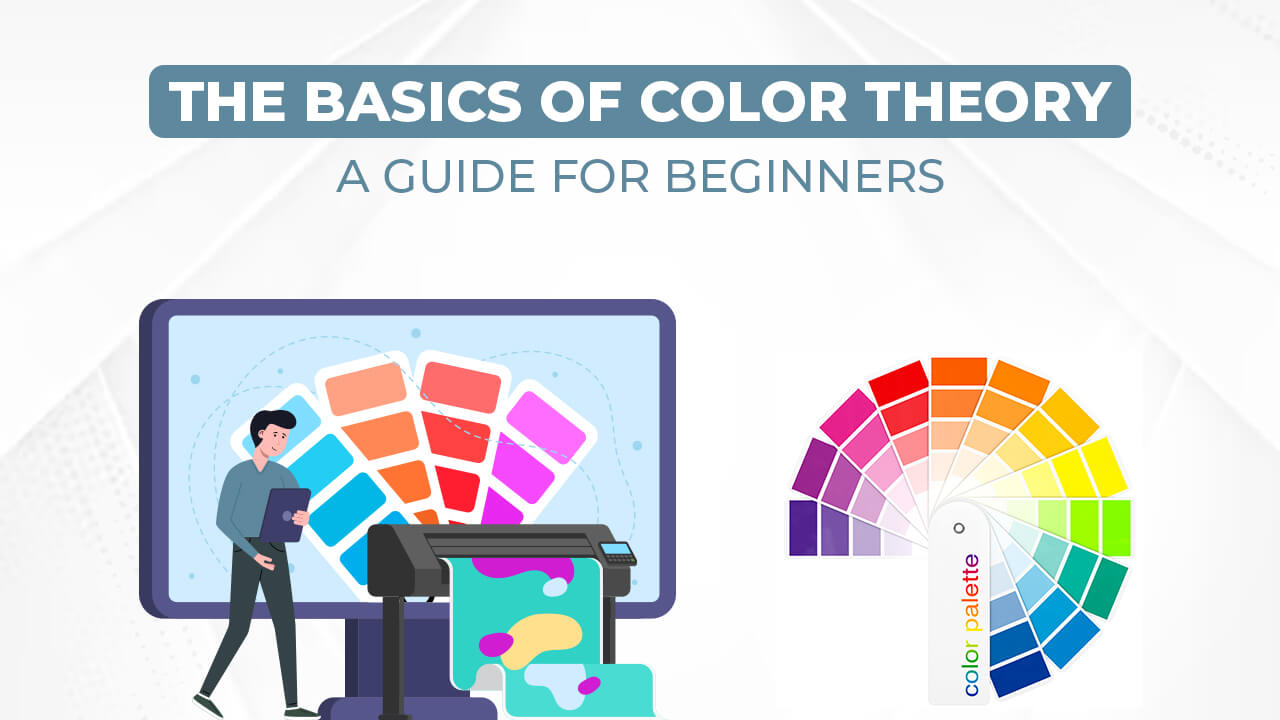
Colour is all around us, filling our lives with vibrancy and beauty. Whether we realize it or not, colours play a significant role in shaping our experiences and perceptions.
Have you ever wondered why certain colour combinations are visually appealing while others seem jarring? Or how colours can evoke different emotions and moods? The answers lie in the fascinating world of colour theory.
Colour theory is a fundamental concept that explores how colours interact, harmonize, and create visual impact. It provides a framework for understanding the principles behind colour selection and combination, making it an invaluable tool for artists, designers, and anyone interested in the visual arts.
In this blog, we will discuss what colour theory is and how it may help you with graphic and web design. Even if you're not an artist, designer, or entrepreneur, understanding more about colour will help you communicate about it more effectively in all aspects of your life.
What is Colour Theory?
The colour theory forms the foundation for essential principles and guidelines governing the use of colour in creating visually pleasing aesthetics. When you grasp the basics of colour theory, you gain the ability to discern the logical structure behind colours, enabling you to strategically create and utilize colour palettes.
This understanding allows you to evoke specific emotions, capture desired vibes, and achieve the desired aesthetic impact in your visual creations.
What is the significance of colour theory in web design?
Colour theory is highly significant in web design as it directly impacts the user experience and perception of a website. By understanding and applying colour theory principles, web designers can strategically choose colours that align with the brand, communicate messages effectively, and evoke desired emotions.
The right colour choices can create visual harmony, establish hierarchy, and improve readability, ultimately enhancing the overall aesthetics and usability of the website.
Understanding of Color Models:
Colour models, also known as colour spaces or colour systems, are mathematical representations that define and organize colours in a standardized way.
They provide a systematic approach to understanding and describing colours, allowing for consistent communication and reproduction of colours across various mediums.
Here are three commonly used colour models:
RGB (Red, Green, Blue):
The RGB model is widely used in digital displays and is based on the additive colour mixing of red, green, and blue light.
Each colour channel is represented by values ranging from 0 to 255, with 0 indicating no intensity and 255 representing maximum intensity. By combining different intensities of red, green, and blue, a wide range of colours can be achieved.
CMYK (Cyan, Magenta, Yellow, Black):
CMYK is primarily used in print and represents the subtractive colour mixing of cyan, magenta, yellow, and black inks.
It is based on the concept that when these inks are mixed, they absorb or subtract different wavelengths of light, resulting in the perception of various colours. CMYK values are typically represented as percentages, indicating the amount of each ink used in the printing process.
HSL/HSV (Hue, Saturation, Lightness/Value):
HSL and HSV models are often used in computer graphics and web design to describe colours in terms of hue, saturation, and lightness (or value).
Hue represents the colour itself, saturation refers to the intensity or purity of the colour, and lightness (or value) represents the perceived brightness.
These models provide a more intuitive and perceptually based representation of colours, allowing for easy adjustment of hue, saturation, and lightness values.
Other colour models, such as Lab, XYZ, and Pantone Matching System (PMS), are used in specific industries or applications to provide more precise and standardized colour specifications.
Primary, Secondary, and Tertiary Colors:
Primary, secondary, and tertiary colours are essential components of colour theory, representing distinct groups of colours based on their relationships and how they are created.
Primary Colors:
Primary colours are the foundation of all other colours and cannot be created by mixing other colours. In traditional colour theory, the primary colours are red, blue, and yellow.
These colours are considered pure and fundamental, and they serve as the base for creating a wide range of colours.
Secondary Colors:
Secondary colours are created by mixing equal parts of two primary colours. The three secondary colours are orange (a mix of red and yellow), green (a mix of blue and yellow), and purple (a mix of red and blue).
Secondary colours are located between the primary colours on the colour wheel.
Tertiary Colors:
Tertiary colours are formed by mixing a primary colour with an adjacent secondary colour. They are located between the primary and secondary colours on the colour wheel. Tertiary colours include shades like yellow-green, blue-violet, red-orange, and more.
These colours offer a wider range of variations and subtleties compared to primary and secondary colours.
Final words:
This is just the beginning of colour theory. There is more to know. We will provide a comprehensive guide about the colour wheel and its use for website and graphics design. By understanding colour wheel theory, artists, designers, and anyone working with colours can make informed decisions when choosing and combining colours.